Cuba
| Other Names: ex-Coblenz, ex-Sachem | Date of Sinking: September 8, 1923 | |||
| Rig/Type: Steam Powered Passenger Vessel | Cause of Sinking: Stranding | |||
| Length: 307.7' | Breadth: 42.2' | Tons: 3,168.8 | Cargo: Passengers, silver bullion | |
| Built: Blohm and Voss, 1897 | Location: San Miguel Island | |||
| Hull Construction: Steel | Depth: 20' | Visibility: 15-40'+ | ||
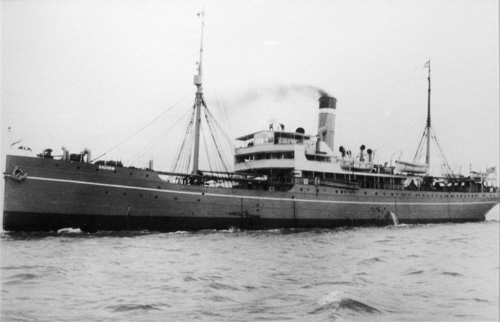
Above: The Cuba underway, at that time, named the Sachem.

The Cuba hard aground near Point Bennett, San Miguel Island, 1923.
The Cuba was launched in 1897 form the shipyard of Blohm and Voss, of Hamburg, Germany. Named the Coblenz, she was powered by two triple expansion engines. Seized as a warprize when the US entered the first world war, she was given American Registry and renamed the Sachem. Purchased by the Pacific Mail Steamship Company in 1920, she was renamed the Cuba.
The Cuba began runs on the San Francisco and Havana, and later to various South American ports. On her last journey from Panama and later Mazatlan, she was cruising up the California coast during the early morning hours of September 8, 1923 and approached the waters of the Santa Barbara Channel. Due to the fog, the crew had navigated on dead reckoning. Coming up on deck at 3AM, the Captain found the fog thick and issued an order to turn to port, taking the Cuba to rocks on the westerly end of San Miguel Island, about a quarter mile off Point Bennett. An immediate attempt was made to back the vessel off the rocks, but the seas forced the Cubaís stern around to the rocks and the props were quickly destroyed.
Captain Holland and some of the crew remained aboard to guard the cargo (including silver bullion), while the crew and passengers boarded the lifeboats. The loss of the Cuba contributing from the wrecking of nine destroyers at Point Honda some five hours later.
Captain Holland and six other of his crew stayed with the wreck until September 14, and removed some of the shipís cargo. In the weeks that followed, the Cuba was salvaged for its goods, most notably from Ira Eaton who later purchased the wreck.
A wreck scatter diagram of the Cuba. Courtesy of the U.S. National Park Service.
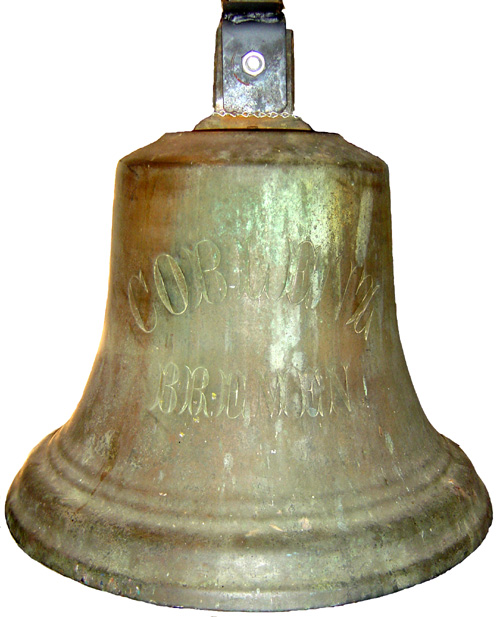
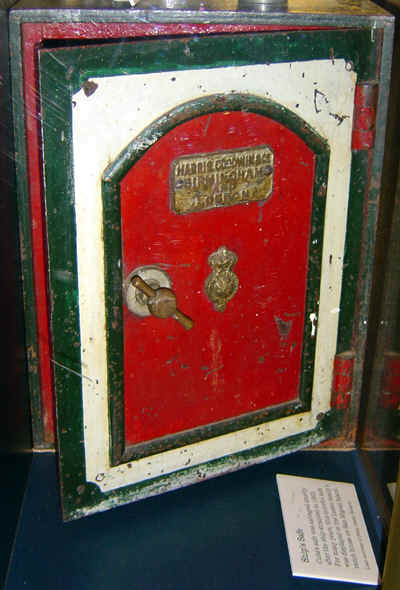
Above Left: The Cuba's bell is on display at the Sexton Museum in Goleta. Above Right: The Cuba's safe, now in the Santa Barbara Maritime Museum.
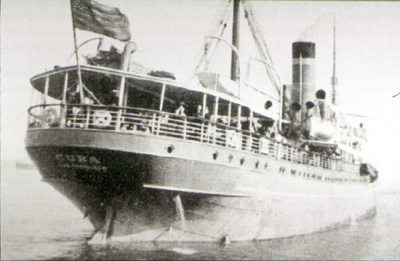
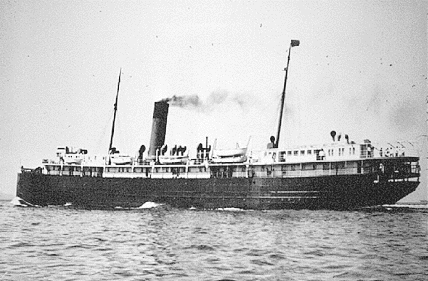
| Like to learn more about this wreck? Visit our Guest Page to submit your inquiry. |
